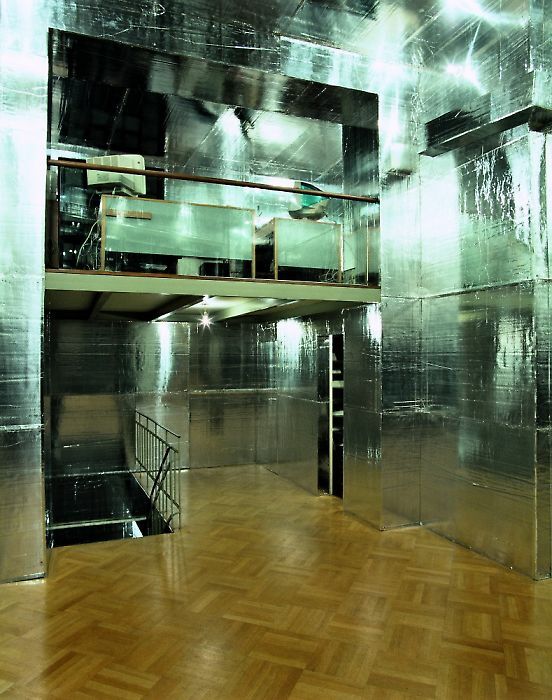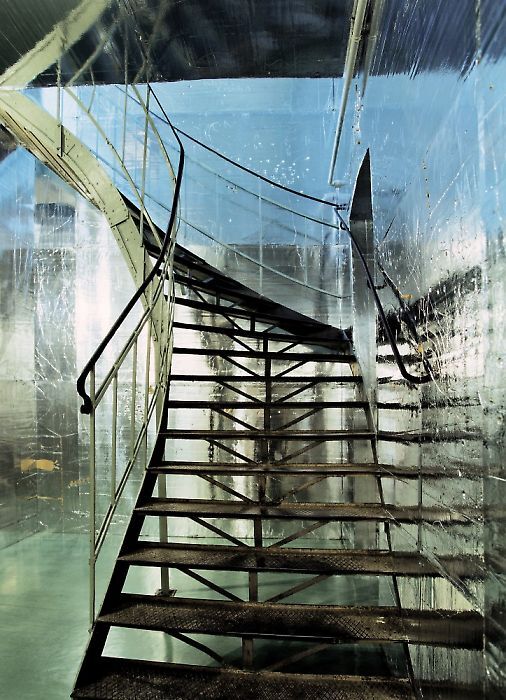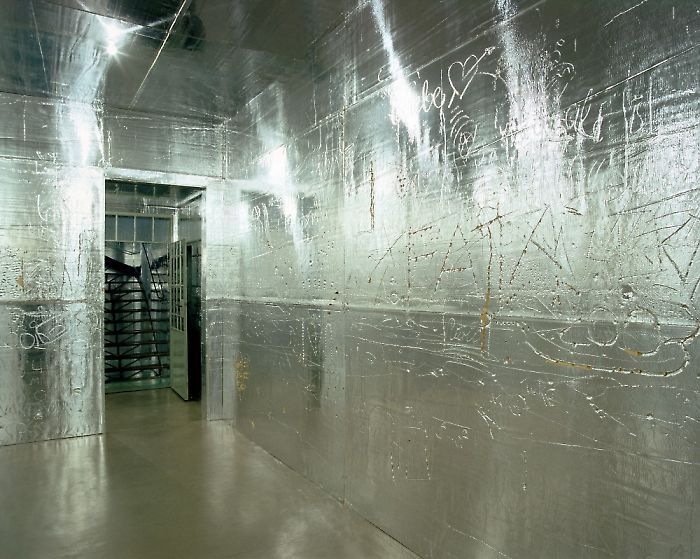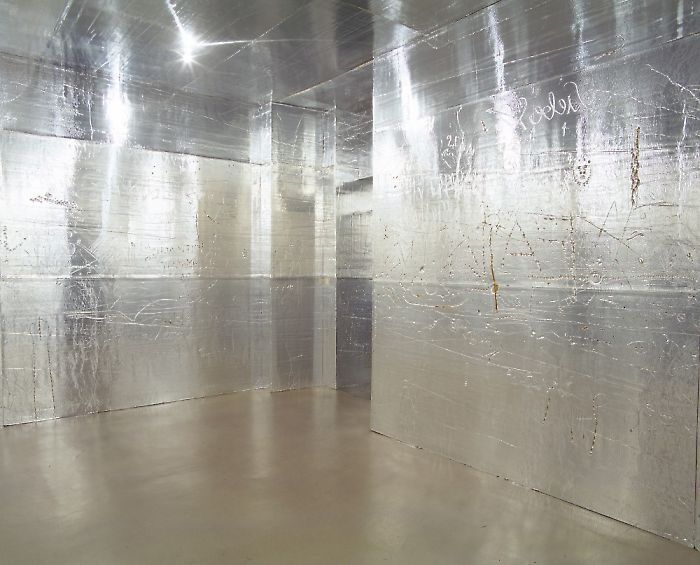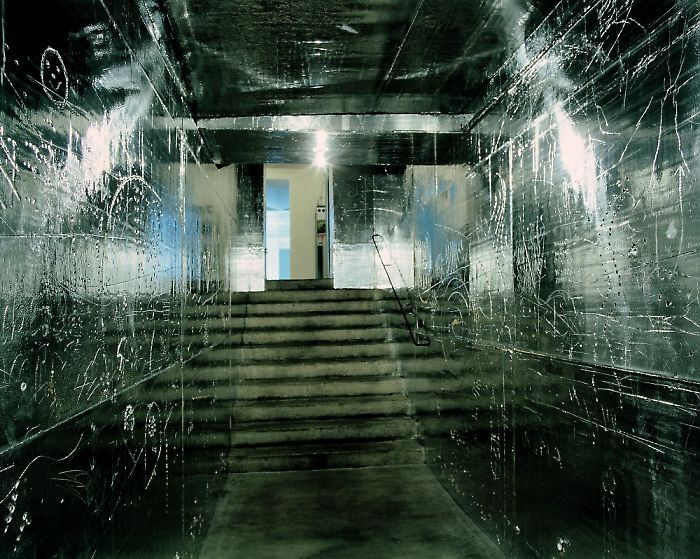—
Rudolf Stingel
To talk about the new installation by Rudolf Stingel, one must first describe the unique architectural characteristics of the gallery where it was installed: not the standard white cube, but a series of connecting rooms and corridors on three levels. Stingel covered every surface of the front galleries, offices, and the hallways with a shiny aluminium foil called Celotex Tuff-R, which is used as an insulation material for home construction. The artist successfully used the material to mute the features of the architecture, diffusing the surfaces and textures of the existing structure so that they fused into a mirror that expanded and distorted the given space. The reflective tone of the rooms dematerialized the gallery, making it feel like a constructed labyrinth. Stingel’s allover approach advanced a familiar minimalist strategy: By equalizing all surfaces through the simplification and elimination of details, he provoked a pure, cleaned-out encounter.
What prevented this from being a genuine phenomenological experience was Stingel’s choice of materials that are easily shaped by either the installation process or the viewer’s participation. Indeed, gallery visitors were encouraged to write on, scratch, or deface the smooth, shiny surfaces, leaving graffiti-like imprints. As one entered the last and final room in the exhibition, which contained only three large “paintings” hung individually on adjacent walls, the situation for the viewer suddenly reversed itself. Stingel used what appeared to be “recycled” panels from previous installations as the basis for these new unique objects. Here it became clear that surface materiality was the artist’s primary focus, and not purely the in-situ aspect of the gallery architecture. With the viewer-participation element rendered static and frozen, Stingel managed to question the authorship of the works, at the same time proclaiming it sacred by framing specific fragments assumed to be either finished or perfect. Walking back through the installation to exit the gallery, one couldn’t help feeling somewhat manipulated, and the architectural illusion, which initially seemed so tantalizing, broke down before one’s very eyes.
Michael Hall, in: tema celeste, 93/2002, p. 103
Inquiry
Please leave your message below.
